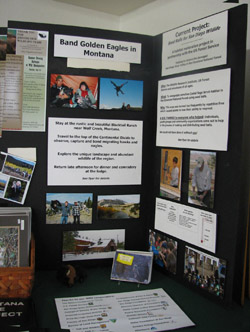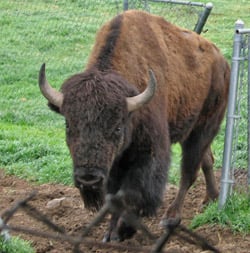 If you’ve been following the blog, you will know that I am telling about my week in San Diego County in California. Because I want to tell you about some of the places in depth, I’ll be stringing these blogs out over a period of time instead of “real” time.
If you’ve been following the blog, you will know that I am telling about my week in San Diego County in California. Because I want to tell you about some of the places in depth, I’ll be stringing these blogs out over a period of time instead of “real” time.
My next port of call was the Wildlife Research Institute (WRI), in the Santa Maria Valley of San Diego County near Ramona. I confess that I am aware of the encroachment of civilization (in this area, the developments building out from San Diego) on to the habitats of animals and birds everywhere, but I didn’t know the details. I left with all kinds of material and it has been very interesting reading. A future column will have more on the function of the Wildlife Research Institute.
While the WRI is concerned greatly with the various hawks and golden eagles in the 3,521-acre Ramona Grasslands Preserve habitat, there are also many other critters, flying and otherwise, that live and depend on this area. If one species disappears, it affects those that are left. WRI is also concerned with improving the water quality of the Santa Maria Creek that flows through the preserve and into the Lake Hodges drinking water reservoir. They are working at reducing the pollutants going into the creek, restoring the natural vegetation, reducing invasive weeds, and managing grassland grazing.
Part of their conserving strategy is to continually bring more acreage into the conservancy by purchasing land as it becomes available. A very important part of managing their growing acreage is to educate the public and work alongside other agencies that are also trying to protect and save our environment for future generations. In my opinion, the most important part of all this is their education program, especially for children. Teach the children about what lives within their environment and the research, development, conservation, and the love of it and it will continue forever. If they aren’t taught to love it and conserve it, all is lost already.
This area, burned by forest fires far too many times since 1986, has now lost its ability to restore itself. They have a program called, “Seed Balls for San Diego Wildlife.” The seed balls, about the size of a large grape, are made of clay, compost and seeds. The hard clay protects the seeds from critters, insects, wind and sun drying, until it rains, then the clay disintegrates, the compost provides nutrients and the seedlings revegetate the soil.
The hard clay protects the seeds from critters, insects, wind and sun drying, until it rains, then the clay disintegrates, the compost provides nutrients and the seedlings revegetate the soil.
What a fantastic service project for communities, schools, Scouts, and individuals. Their web site is www.wildlife-research.org. It seems that this kind of service project could be used almost anywhere that revegetation is needed.
The WRI also had a small bison herd. Now I’ve seen various bison herds in my RV travels and I can honestly say they have faces only a mother could love. Of course, to this mom, my kid’s faces are more “enticin’” than the bison. Sorry! I remember being told up in the Badlands of South Dakota as we were observing a herd of these big burly beasts, that we should always beware, if a bison lifts a tail, it is either going to charge or discharge. God Bless until next week.
Minshall’s RVing Alaska and Canada ($19.95) and RVing Adventures with the Silver Gypsy ($16.95) are available thru Amazon.

Leave a Reply